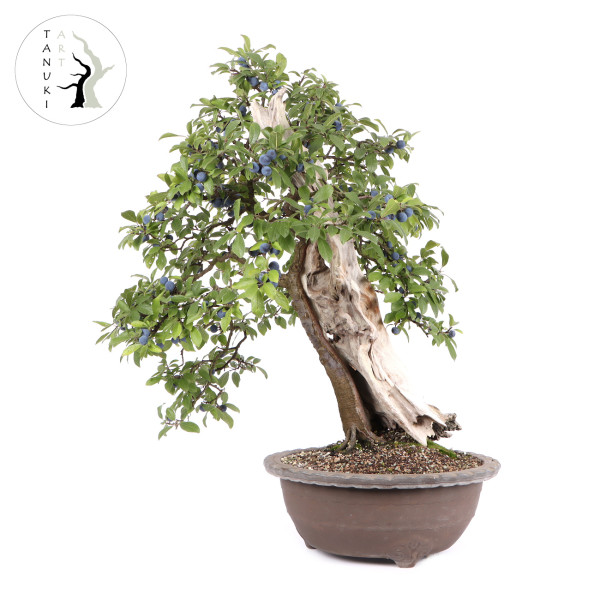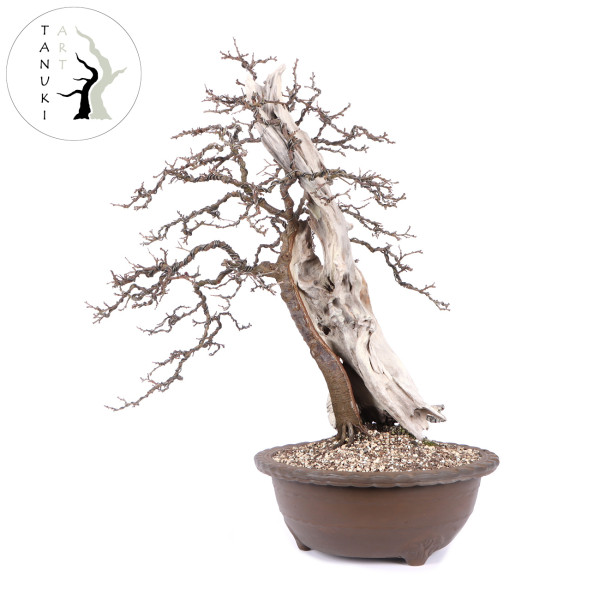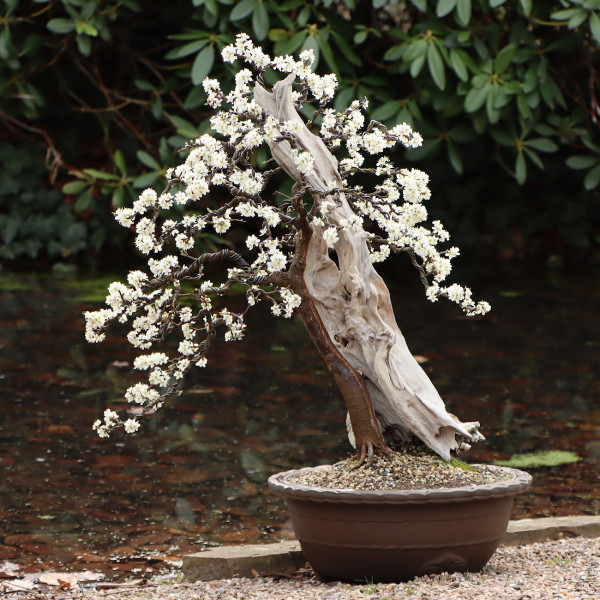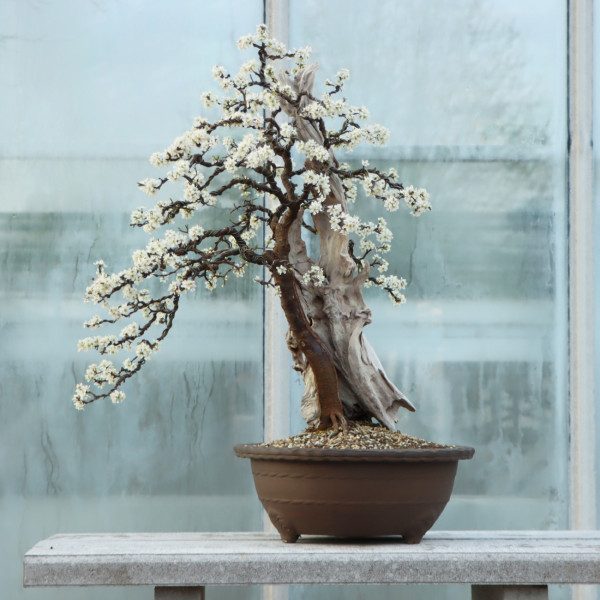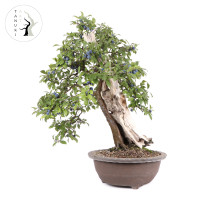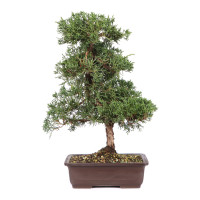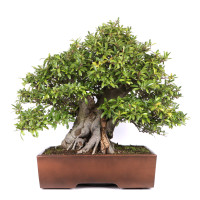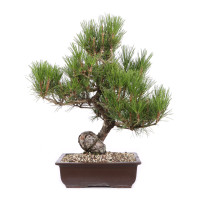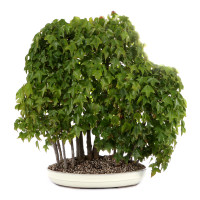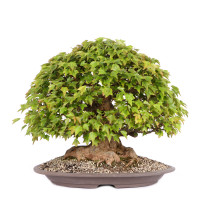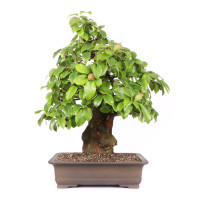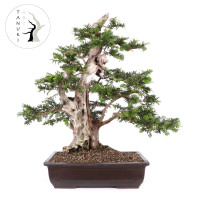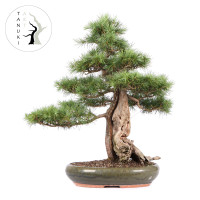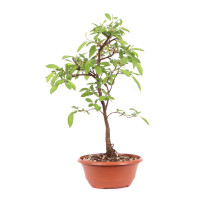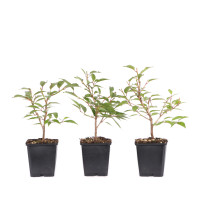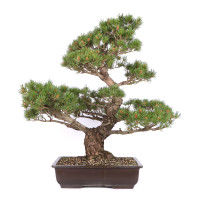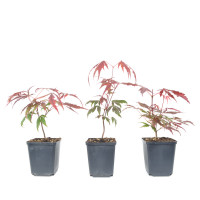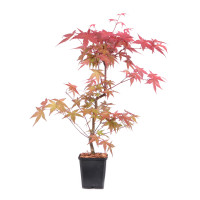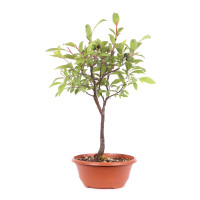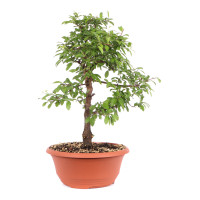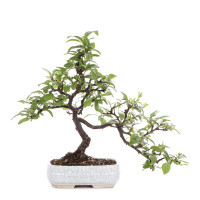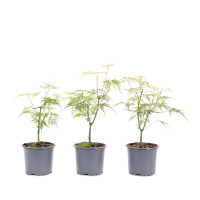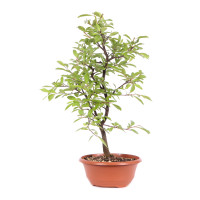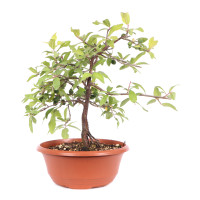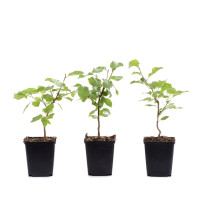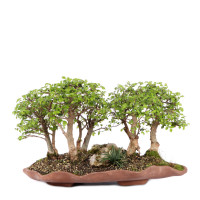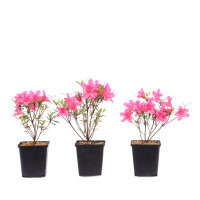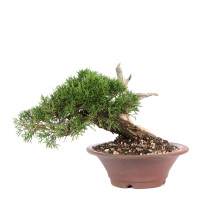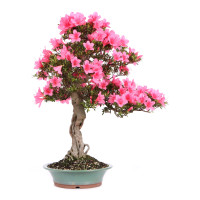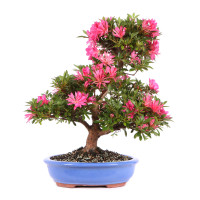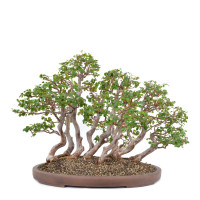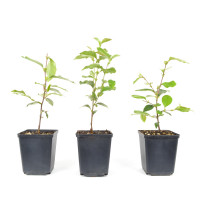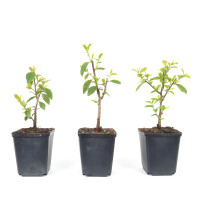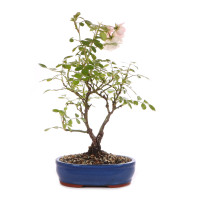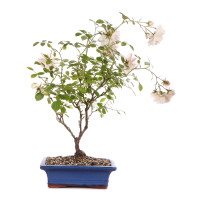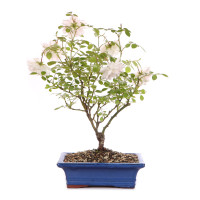- Order number: 1052-KT-23-1313
- Addtion: Tanuki
- Height: 80 cm (incl. pot)
- Foliage: deciduous
- Bonsai Pot: ceramic pot
- Year: 2011
- Forms of design: inclined trunk (Shakan)
- Characteristics: attractive autumn colour, with flowers, with fruits
- Origin: Germany
Prunus spinosa - Blackthorn
General:
The blackthorn can often be found in Germany in hedges, on the edges of forests or as pioneer bushes on lean sites. It usually grows hidden and inconspicuous as a bulky shrub together with other plants. In April / May the blackthorns can be recognized by their countless, small, white flowers. Then large parts of the landscape turn white before the leaves shoot, heralding spring. Blue frosted fruits develop from the flowers, which are edible after exposure to frost or which can also be processed into schnapps. As the name suggests, the bark and branches of the blackthorn are black and thorny. The leaves are deciduous, mostly elliptical and turn yellow in autumn.
Care as a bonsai:
Blackthorns develop into incredibly beautiful bonsai. Old specimens are richly branched and the deep black bark is a great contrast to the white flowers in spring. The blue fruits in the green and later bare crown are also very ornamental. In addition, the species is very robust and adaptable. A bright location, a good supply of water and nutrients as well as regular repotting ensure healthy development. Blackthorns are frost hardy, but like all bonsai, the fresh roots are sensitive to late frost in spring.
About Tanuki:
A special technique for quickly obtaining expressive and very old-looking bonsai is to "marry" a plant to a dead piece of wood. This usually involves joining long grown plant material to a nicely shaped piece of wood. The plant and the wood are sometimes intricately worked and over time become fused into a single unit. The artistic connection often resembles very old specimens collected in nature (Yamadori) and often looks deceptively real.
Bonsai created by this technique are called "Tanuki" in Japan. The name "Tanuki" also stands for the native "tanuki", which appears in mythology as a mythical creature. In the legends he appears as a cunning quick-change artist, who likes to lead people behind the light, but through these abilities often emerges as the hero of a story.
About the artist:
All "Tanuki Art" - bonsai were designed by the artist Mulyadi. Mr. Mulyadi has been professionally involved in the design of bonsai for many years. In his home country Indonesia he creates extraordinary bonsai out of different plant material. In addition to the implementation of classical forms of design, he has developed his own style and is always looking for creative solutions. The application of the Tanuki technique is his absolute passion and he has developed special methods to achieve unique results in terms of craftsmanship and artistry. "Tanuki Art" - Bonsai are available exclusively in the Bonsaischule Enger.

